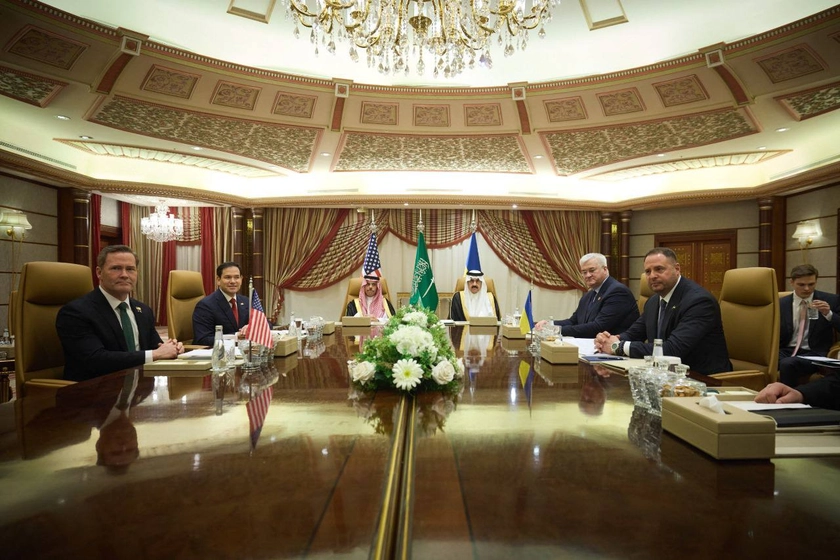Russian officials have defended the use of donkeys in support of military logistics, calling it a normal practice, according to a report by Defense Express.
Reports on the use of donkeys by Russia’s armed forces have become widespread, particularly since they are being officially deployed by Russian Defense Ministry supply units rather than through volunteer initiatives.
JOIN US ON TELEGRAM
Follow our coverage of the war on the @Kyivpost_official.
Retired Lt. Gen. Viktor Sobolev, a Communist Party deputy and member of the Russian State Duma’s Defense Committee, acknowledged significant logistical challenges in supplying Russian forces with ammunition, technical equipment, and food.
“If methods such as donkeys, horses, and other animals are used to deliver ammunition and supplies to the front line, that is normal,” Russian media quoted Sobolev as saying.
Referring to their use during World War II he recalled that much of the artillery was horse-drawn at the time.
“Dogs were also used in that war,” he added. “They were loaded with explosives and sent to areas where they were needed.”
As Defense Express outlines, Sobolev was referring to so-called anti-tank suicide dogs, which were specially trained to destroy enemy armored vehicles.
These animals were turned into mobile anti-tank mines and trained to carry explosives under stationary or moving tanks where their payload was detonated. According to various sources, the charges ranged from 4 kilograms (8 pounds) to 12 kilograms (25 pounds), depending on the target.

‘A Beacon of Democracy’ – EU Looks to Resume Funding for RFE

Reports vary on the effectiveness of this method, with some sources claiming that although as many as 9,500 dogs were trained, it was estimated they only destroyed around 300 tanks. A perhaps apocryphal story says the practice was discontinued after a short time as the dogs were trained using Soviet vehicles as targets and would often attack their own side’s armored vehicle as a result.
Last week, several Russian Telegram channels reported that the Russian army had begun using donkeys to transport ammunition to the front lines. Russian soldiers claimed they were given these animals as replacements for vehicles, which were in short supply.
On Feb. 5, the Russian Telegram channel Mayorsky KortiZol published a video in which a Russian soldier says:
“They gave us a donkey. It’s parked in the support platoon. They said, ‘We have sh*t for transport, right? Here’s a donkey. Use it to transport ammunition to the front lines.’”
The video producer pointed out that the donkey was not provided by volunteer humanitarian aid but was issued as standard equipment by the Ministry of Defense.
Another Russian serviceman claimed that his unit had received four donkeys:
“They’re bringing us donkeys—real ones! Four of them. I don’t know how they’ll divide them. They’re using donkeys to transport ammo. The order is to build a corral for them. 21st century - we’re going to war on donkeys.”
Meanwhile, a Russian milblogger wrote that his unit was also considering acquiring a donkey, emphasizing its ability to move silently.
The Belarusian opposition outlet Nasha Niva reported that, according to a Russian Defense Ministry equipment list, horse-drawn and pack animals - including donkeys - are officially recognized as transport options. The list, approved in 1999, also includes horses, camels, and reindeer.
Kyiv Post has not previously observed any reports of widespread horse-drawn transport in the Ukrainian military. However, in March 2023, Ukrainian media reported on the evacuation of a combat donkey named Himars from the front lines.
The donkey was rescued in the Donetsk region and “joined” the ranks of the Armed Forces of Ukraine (AFU) after being adopted by soldiers from the 112th Territorial Defense Brigade. His task was to transport ammunition, carrying two boxes at a time over a five-kilometer route.
According to Ukrainian servicemen, in the summer of 2022, they were holding positions near the occupied town of Svyatohirsk. With almost all residents having fled the frontline village, a local informed them that the donkey had been left behind.
The soldiers found the animal starving and took him in. Since the area was under constant fire, vehicles couldn’t reach their positions, which were only a few hundred meters from Russian forces. The donkey soon began assisting by carrying ammunition, water, and food to Ukrainian troops.
The donkey was given the call sign “Himars,” coinciding with the arrival of the first American HIMARS multiple rocket launchers in Ukraine. However, the soldiers said that “Himars” had a habit of revealing their positions - by eating all the vegetation along the way.
To evacuate the donkey, the military contacted animal rights activists willing to take him in, but they were based in Kramatorsk. The soldiers arranged transport, ultimately getting “Himars” onto a vehicle. Eventually, the donkey made his way from the Donetsk region to Odesa, where he now lives by the sea.
You can also highlight the text and press Ctrl + Enter












